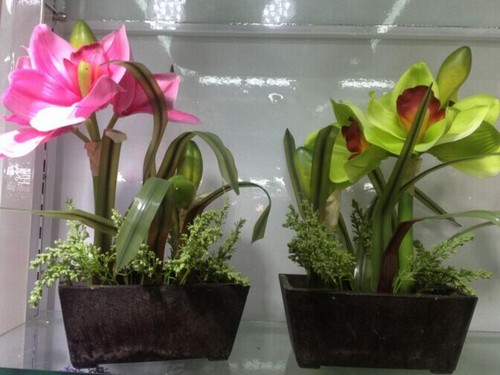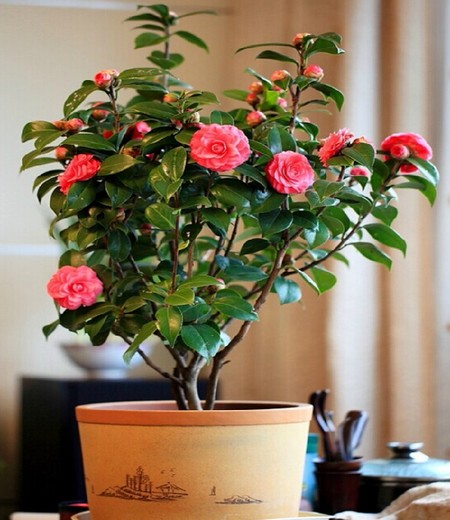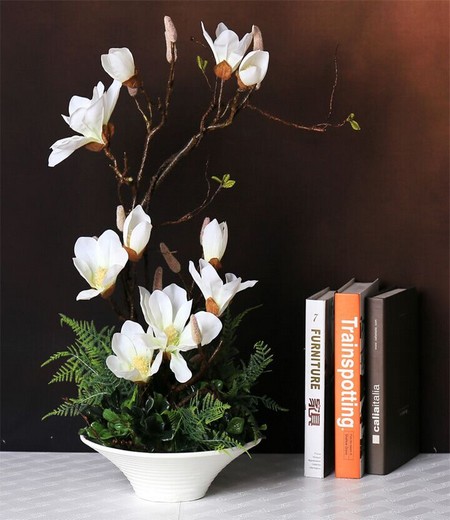Cultivation and Propagation of Magnolia
Magnolia is a traditional famous flower in China. The crown of the seedlings is beautiful, the flowers are large and fragrant, the leaves bloom in early spring, the seedlings are full of flowers, crystal clear as jade, fragrant as orchid. In the garden, no matter in front of the window, in the corner of the house, by the side of the road, or among the rocks, it can be planted alone or in clusters; in large gardens, a special magnolia garden can be built. When it comes to blooming, the jade seedlings become a forest, and the Qionghua is boundless, which is more attractive. The seedling has a certain resistance to toxic gases, so it is also suitable for factory and mine greening.

To breed:
Magnolia can be propagated by sowing, cutting, striping and grafting. The seeds were collected in late September, dried and then sown in the following spring. If possible, the seeds can be sown in the greenhouse sand bed. Density to non-overlapping as the standard, covering about 2 cm of river sand, keep moist. After germination, the seedlings were transplanted into paper containers and planted in the nursery about 1 month later. Cutting propagation can be carried out in the rainy season, cutting selected from the current year branches of young seedlings, cutting substrate with river sand, sunshade above. According to the situation, different methods such as burying soil or high branch pressing can be used for striping propagation. Grafting can be propagated by split grafting, abdominal grafting, bud grafting and other methods. Huangshan magnolia, magnolia wild seedlings and seedlings are generally used as rootstocks, fistula panicles are selected from excellent plants, and the survival rate of split grafting in late autumn is higher. Do not hurt the fleshy root when transplanting, large seedlings need to bring mud balls, pay attention to digging large holes, deep fertilization, shallow seedlings. The best time for transplantation is half a month before the bud germinates or when the leaves are not unfolded.
Cultivation:
Magnolia is not resistant to transplantation and is generally ideal for transplanting 10 to 15 days before sprouting or when the flowers have just withered but have not spread their leaves. The seedlings should be watered once 4 to 5 days before seedling emergence, which can not only make the plants absorb sufficient water, which is beneficial to the survival after planting, but also benefit the soil to form balls when digging seedlings. When digging, the root system should be hurt as little as possible, and the root wound must be smooth to facilitate wound healing. In addition, it should be noted that no matter how big the seedling is, the soil ball diameter should be 8 to 10 times of the seedling ground diameter, not too small, too small can not protect the root system. After the earth ball is dug, it should be tied up with straw rope to prevent it from falling apart during transportation.
Dig the tree hole well before planting, the tree hole should be large, not small, the tree hole is too small, it is not only troublesome to plant, but also not conducive to root growth. The soil at the bottom of the tree pit had better be mature soil, and the soil should be treated or improved if the soil is too sticky or the pH value and salt content exceed the standard. The permeability of cultivated soil must be good, soil fertility must be sufficient, enough nutrients should be provided to plants, and there should be no impurities such as bricks, tiles, lime and so on in the soil.
Planting depth should be appropriate, generally speaking, the planting depth can be slightly higher than the original soil ball 2 to 3 cm, too deep is easy to sprout, too shallow will make the root bare, but also easy to be blown down by the wind. Large size seedlings should be set up in time, and the bracket can be used with triangular support to prevent it from being tilted by the wind; after planting, it should be watered immediately, watered two days later, watered three days later, and can enter normal management after three days. If the seedlings have buds, the buds should be cut off to prevent flowering and fruiting from consuming a lot of nutrients and affecting the survival rate.
Magnolia is a flowering tree species with early spring color and fragrance. When planting, it is necessary to grasp the right time, neither too early nor too late. It is most suitable to plant Magnolia 10 days before germination in early spring or before spreading leaves after flower fade. When transplanting, regardless of the size of the seedlings, the roots should carry mud clumps and be careful not to damage the roots as far as possible. To ensure survival. Before planting, fully mature organic fertilizer should be applied in the hole as base fertilizer. After planting, seal the soil and press it, and pour enough water in time.
Magnolia prefers fertilizer, but avoids big fertilizer; generally applying fertilizer twice during the growing period can be beneficial to flower bud differentiation and promote growth. Once in early spring, and again in May-June. Fertilizers are often made of fully mature organic manure. Newly planted seedlings do not need to be fertilized until after falling leaves or in the following spring. The root system of Magnolia is fleshy and can not tolerate stagnant water. It is advisable to keep the soil moist during the flowering and growing period. After entering the autumn, we should reduce watering, delay the rooting of magnolia, and promote the branches to mature in order to survive the winter. It is generally not watered in winter, but only once when the soil is too dry. Magnolia branch wound healing ability is poor, so generally do not prune. However, for the sake of reasonable tree shape, the overgrown branches, withered branches, disease and insect branches and branches that hinder the beauty of the tree shape should still be cut off at the initial stage of leaf expansion. In addition, after the flower fades, if there is no seed left, what should the residual flower be? The ear is cut off so as not to consume nutrients and affect flowering in the coming year.
Time: 2019-05-25 Click:
- Prev

Planting method of hibiscus flower
Hibiscus is a traditional famous flower in China, which has been cultivated for nearly 3000 years. Hibiscus is a common deciduous shrub or small tree with strong adaptability. It is suitable for planting in north and south. It is semi-shade-tolerant, cold-resistant and semi-drought-tolerant. It usually grows well in moist soil. Strong sprouting and resistance to pruning
- Next

Planting methods of Magnolia
Magnolia, also known as Magnolia Magnolia, comes from the flowers of Magnolia in Magnoliaceae. There is another kind of magnolia, which has large flowers and can be used as a street tree for viewing. The petals of magnolia are white or purple striped. Magnolia is one of the most valuable flowers and trees in China, and it has been loved by people since ancient times.
Related
- Fuxing push coffee new agricultural production and marketing class: lack of small-scale processing plants
- Jujube rice field leisure farm deep ploughing Yilan for five years to create a space for organic food and play
- Nongyu Farm-A trial of organic papaya for brave women with advanced technology
- Four points for attention in the prevention and control of diseases and insect pests of edible fungi
- How to add nutrient solution to Edible Fungi
- Is there any good way to control edible fungus mites?
- Open Inoculation Technology of Edible Fungi
- Is there any clever way to use fertilizer for edible fungus in winter?
- What agents are used to kill the pathogens of edible fungi in the mushroom shed?
- Rapid drying of Edible Fungi

